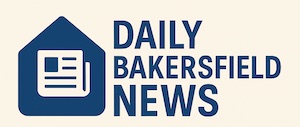In the quest for financial freedom, many individuals grapple with the overwhelming weight of multiple debts. The debt snowball method presents itself as a compelling strategy, promising a systematic approach to eliminate debts by focusing on smaller balances first, thereby creating a psychological momentum that fuels continued progress. This method has garnered considerable attention, largely due to the advocacy of personal finance expert Dave Ramsey, who emphasizes its behavioral foundations over purely mathematical benefits. As borrowing and credit remain central to many households’ financial structures in 2025, understanding the practicalities, advantages, and limitations of the debt snowball method is essential for anyone looking to regain control over their finances.
Understanding the Debt Snowball Method: A Step-by-Step Breakdown
The debt snowball method is a debt repayment strategy that involves targeting debts from the smallest balance to the largest, regardless of the interest rates involved. Instead of optimizing purely based on financial math, the method prioritizes quick wins to foster motivation and momentum. This behavioral approach can be a game-changer for individuals struggling to stay engaged with their debt repayment plans.
Here is a detailed look at how the debt snowball operates in practice:
- Step 1: List all debt balances from smallest to largest without regard to interest rates, excluding mortgage debt in most cases.
- Step 2: Continue to make minimum payments on all debts except the one with the smallest balance.
- Step 3: Allocate as much extra money as possible towards the smallest debt, accelerating its repayment.
- Step 4: Once the smallest debt is cleared, roll its minimum payment into the next smallest debt’s monthly payment.
- Step 5: Repeat the process until all debts are fully paid off.
This momentum-building approach mirrors the concept of a snowball rolling downhill: the payment amounts grow larger as each debt is eliminated, increasing the speed at which subsequent debts are tackled. This makes the process feel more manageable and psychologically rewarding.
To exemplify, consider a person’s debt consisting of a $500 medical bill, a $2,500 credit card balance, a $7,000 car loan, and a $10,000 student loan. Following the debt snowball, they’d aggressively pay off the $500 medical bill first while paying minimum payments on the rest. After clearing the smallest debt, the money previously dedicated to it is added to the payment on the next smallest loan, creating a larger payment that accelerates the payoff of debts down the list.
| Debt | Balance | Minimum Payment | Payment with Snowball | Approximate Payoff Time |
|---|---|---|---|---|
| Medical Bill | $500 | $50 | $550 (with extra payments) | 1 month |
| Credit Card | $2,500 | $63 | $613 | 4 months |
| Car Loan | $7,000 | $135 | $748 | 9 months |
| Student Loan | $10,000 | $96 | $944 | 9 months |
By following this approach, individuals can dramatically reduce the payback period and stay motivated throughout the process, which is often the hardest part of debt repayment.
Why Behavioral Change Makes the Debt Snowball Method Effective
The success of the debt snowball method extends beyond mathematical equations and interest calculations. A critical factor lies in the psychological aspect of debt repayment, a principle thoroughly embraced by Dave Ramsey and echoed by financial platforms such as NerdWallet and Mint. These platforms highlight that debt management often requires a mindset shift more than a financial recalculation.
According to financial psychology, seeing small debts eliminated quickly creates a sense of achievement that drives ongoing commitment. Behavioral economics tells us that immediate rewards — such as the emotional satisfaction of paying off a credit card — can be more motivating than distant, larger savings, such as interest reduction from paying off a larger loan with a higher interest rate first.
- Motivation Through Quick Wins: The brain’s reward system responds strongly when a task yields rapid, visible success. This builds momentum in managing finances.
- Consistency and Commitment: Motivated individuals are more likely to adhere to their repayment plans without lapsing into new debt or overspending.
- Behavioral Reinforcement: Each success reinforces the positive habit of diligent payment, shifting behaviors toward financial responsibility.
- Reduced Psychological Burden: Paying off smaller debts first reduces stress, as fewer creditors remain to manage.
This behavioral leverage is supported by data from financial coaching outcomes, where participants using the debt snowball through programs like Financial Peace University reported substantial debt reduction and improved financial confidence.
In contrast to the debt avalanche method, which prioritizes higher-interest debts first (thus yielding greater interest savings over time), the snowball method excels at creating sustainable behavioral change. Tools from Credit Karma, Experian, and Debt.com provide users with analytics and progress tracking, complementing the motivational strategy of the snowball method and assisting users in staying focused on financial goals.
The Impact of Interest Rates and How They Influence Debt Repayment Choices
A key criticism of the debt snowball method is that it does not prioritize debt repayment based on interest rates. This can result in paying more interest over time compared to methods that target high-interest debts first, such as the debt avalanche method.
Financial advisors from SoFi and Credit Sesame caution that while the snowball’s behavioral advantages are significant, individuals should assess their overall financial situation carefully. For some, high-interest credit card debts can grow faster than balances shrink, increasing total repayment costs.
Here is a comparison of both methods:
| Method | Repayment Order | Focus | Interest Saved | Psychological Impact |
|---|---|---|---|---|
| Debt Snowball | Smallest debt to largest debt | Motivation and momentum | Potentially less | High – quick wins |
| Debt Avalanche | Highest interest rate to lowest | Minimize interest payments | Higher savings | Lower – slower wins |
When deciding on a debt repayment strategy, individuals should consider their financial discipline, psychological preferences, and debt structure. For example, if one’s smallest debts also carry the highest interest rates — such as certain credit cards — the snowball method effectively aligns with financial optimization. Alternatively, combining elements of both strategies can also yield balanced results.
Resources like Robinhood and Intuit’s budgeting tools can help track interest accruals and simulate payoff scenarios, giving users a comprehensive understanding of long-term costs and benefits.
To explore strategies for effective monthly budgeting in 2025 and beyond, readers may find this guide beneficial: monthly budget 2025.
Integrating Debt Consolidation and Financial Tools with the Debt Snowball Approach
Debt consolidation is a financial strategy that merges multiple debts into a single loan, often at a lower interest rate. This can complement the debt snowball method by reducing the complexity of payments and potentially lowering monthly obligations, enabling a more aggressive snowball payment plan.
Common approaches to consolidating credit card debt include:
- Obtaining a personal debt consolidation loan with a fixed interest rate.
- Transferring balances to a credit card offering low or 0% introductory APR to minimize interest accumulation.
Institutions like SoFi and Debt.com provide competitive consolidation loan products, while platforms like Credit Karma offer insights on optimizing credit transfer options. Mint and Experian also feature credit monitoring and budgeting services that help consumers maintain awareness of their debt status and milestones.
By integrating consolidation solutions with debt snowball tactics, debtors can streamline payment efforts and potentially shorten payoff periods. However, caution must be exercised to avoid accruing new debt during the payoff journey.
| Consolidation Method | Benefits | Potential Drawbacks |
|---|---|---|
| Personal Loan | Lower interest rates, fixed payments, simplified payments | Possible origination fees, impact on credit score |
| Balance Transfer Credit Card | 0% APR introductory offer, no upfront fees often | High rates after promo period, balance transfer fees |
Moreover, maintaining consistent budgeting discipline with tools recommended by NerdWallet or Intuit can support individuals through the emotional and logistical challenges of debt repayment. They enable tracking of spending habits, income allocation, and automatic application of payments, amplifying the effectiveness of the debt snowball.
Staying Motivated and Overcoming Challenges During Debt Repayment
While the debt snowball method is praised for its motivational approach, it requires sustained discipline, sacrifice, and strategic budgeting to succeed. Planning to avoid pitfalls such as accruing new debt or decreasing payments prematurely is crucial.
Here are key strategies to maintain motivation and maximize progress:
- Set Clear Financial Goals: Define specific, measurable objectives to track debt reduction milestones.
- Create a Budget with Buffer: Ensure budget flexibility to accommodate unexpected expenses without disrupting payments.
- Leverage Support Networks: Join communities or classes such as Financial Peace University for accountability and encouragement.
- Use Technology Tools: Utilize apps from platforms such as Mint, Credit Sesame, and Robinhood to track progress and receive reminders.
- Reward Yourself: Celebrate small victories responsibly to reinforce positive behavior.
Financial coaching and peer support have proven to reduce dropout rates among individuals undertaking debt repayment plans. According to user data collected through these platforms, those who consistently engage in tracking and community support repay debts significantly faster.
Adopting a mindset that views debt repayment not merely as an obligation but as an empowering step towards financial independence can profoundly affect the outcome.
Essential Tools and Resources for Effective Debt Management
- Financial Planning Tools: Mint, NerdWallet, Intuit budgeting software.
- Credit Monitoring Services: Credit Karma, Experian, Credit Sesame.
- Investment Platforms with Education: Robinhood for wealth building post-debt.
- Debt Management Education: Financial Peace University, Debt.com resources.
Frequently Asked Questions About the Debt Snowball Method
- Q: Does the debt snowball method save money in interest compared to other methods?
A: While the debt snowball prioritizes smallest debts over interest rates, it may lead to paying more interest overall than methods like the debt avalanche. However, its psychological benefits often lead to better adherence, which can offset some costs. - Q: Can the debt snowball method be used for all types of debt?
A: Yes, although it’s most commonly applied to non-mortgage debts like credit cards, auto loans, personal loans, and student loans. - Q: How does debt consolidation work alongside the debt snowball method?
A: Debt consolidation can simplify payments and potentially reduce interest, enhancing the debt snowball’s effectiveness by allowing more money to be applied toward repayment. - Q: How do I stay motivated throughout the debt snowball process?
A: Setting clear goals, tracking progress with tools like Mint and Credit Karma, seeking community support, and celebrating small victories are effective strategies. - Q: Does paying off debt hurt my credit score?
A: Paying off debt generally improves credit utilization rates and can enhance your credit score, although closing accounts may sometimes temporarily lower your score due to reduced credit history length.

